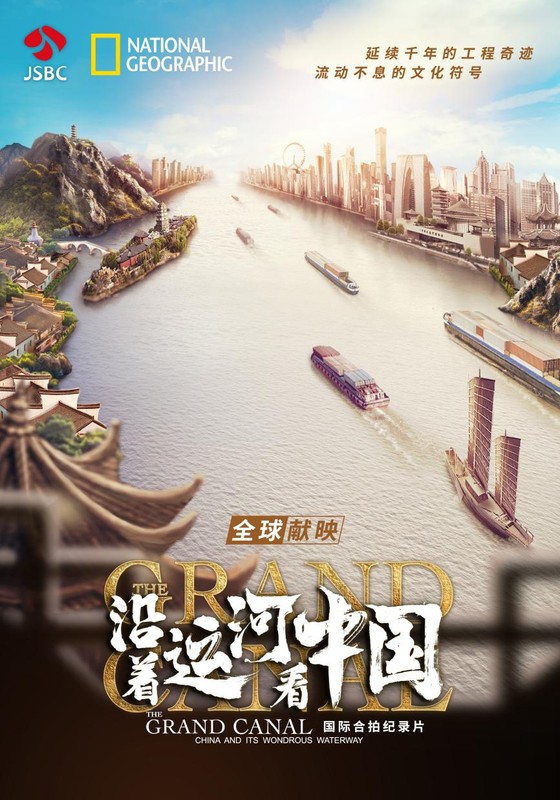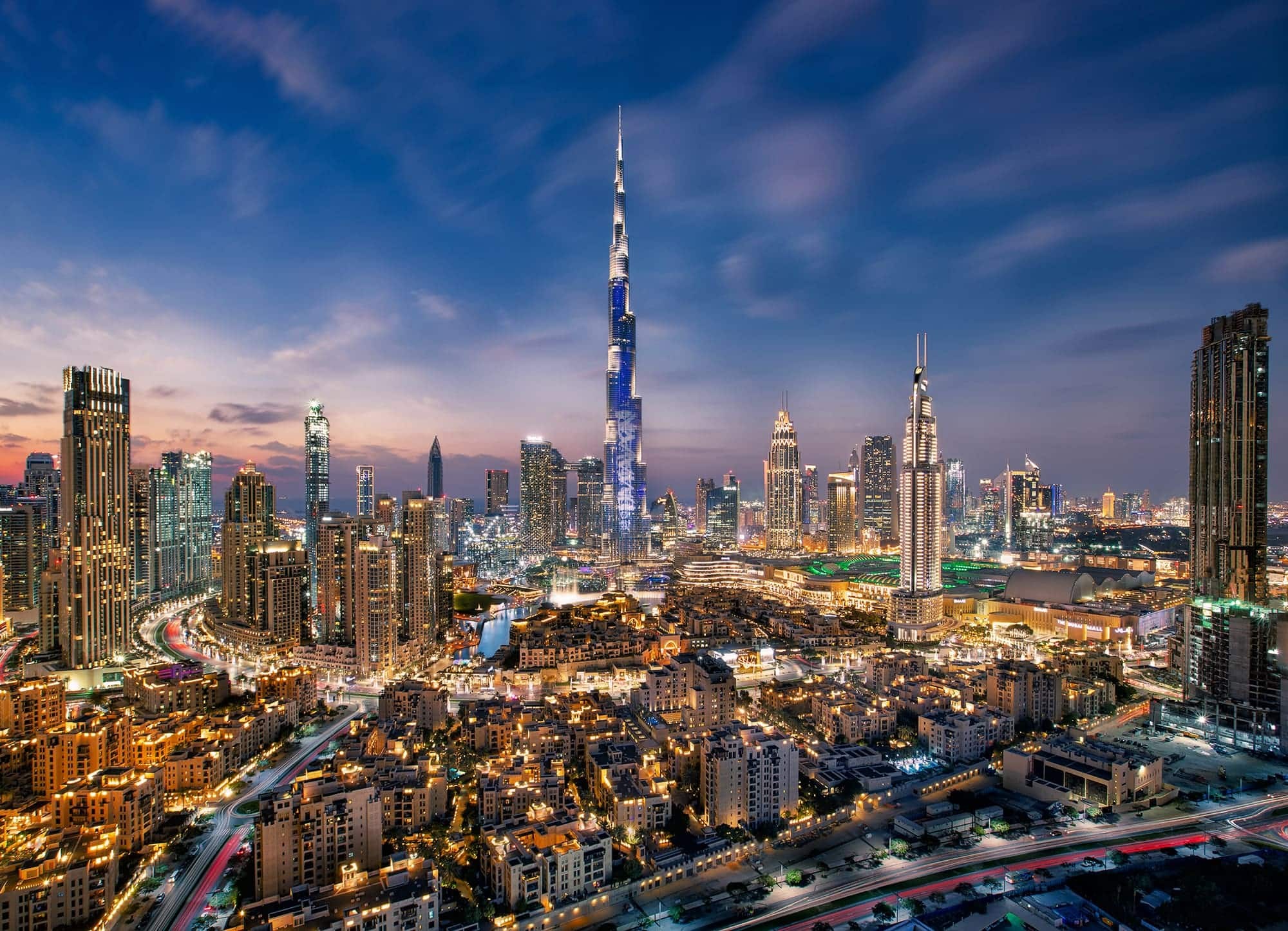Join the Grand Canal on the Eye-Opening Journey
Jiangsu, China – March 16, 2024 —
In a teahouse in Yangzhou, China, Andrew was impressed by a “Chinese hamburger” that is served with a straw made from reed. Its rich flavors, long history, and brilliant culture compose the beautiful city of Yangzhou, the birthplace of one of China’s hidden treasures – the Grand Canal.
From this remarkable canal city, Andrew embarked on his eye-opening and inspiring journey. He traveled to over 20 cities and towns along the Grand Canal, all presented in the 90-minute documentary The Grand Canal: China and Its Wondrous Waterway.

“Together we achieved this unique documentary series, which tells the story of the Grand Canal as it has never been told before.”
This documentary is co-produced by Jiangsu Broadcasting Corporation and National Geographic. A Chinese story that transcends time and space has been brought to life through the perspective of ordinary people.
The presenter Andrew Field, Associate Professor of Chinese History at Duke Kunshan University, as well as a renowned documentary producer, has lived in China for 26 years. His story with the Grand Canal began in the 1980s during his first visit to China when he realized the importance the Canal played in Chinese history.
Now, there’s a new chapter being written to this story.
At the Shiqiao Lock in Yangzhou City, Andrew saw how the Grand Canal is serving as an important role for transportation between North and South China, just as it has for thousands of years. Each year, more than 300 million tons of goods are transported through this lock, with mdern technologies to ensure its safety, efficiency, and speed. “”China’s waterways are clearly on the move!” The Grand Canal has nurtured the Jiangnan region, which is known as China’s economic powerhouse, with numerous prosperous cities lining its banks.
The remarkable achievenments in construction engineering and water management are another important part of the story of the Grand Canal. In another city, Huai’an, Andrew witnessed the impresssive Huai’an Water Interchange project, where the Grand Canal crosses above while the Huai River flows beneath it toward the sea. This structure ensures that flood control and transportation stay separate. “”Even if there’s rough seas below, we have calm water up top!”
It’s quite evident that the Grand Canal continues to influence China’s industry and economy significantly. Surprisingly, it is also playing a crucial role in the ecological restoration aimed at reversing the damage caused by heavy industry. In this documentary, this is exemplified by the Pan’an Lake National Wetland Park in Xuzhou City. Previously, this area was a hub for China’s coal industry, due to its position along the Grand Canal. Today, with the strong determination to clean up the environment and to improve the living quality for locals, the former coal mines have been transformed into a wetland filled with geese flying overhead, the sounds of birds singing, and the scent of flowers in the air.
The canal didn’t just bring prosperity, but also culture and lifestyle. In the silk town of Shengze, Andrew witnessed the weaving of the fabric for the Princess of Wales’ wedding dress using an ancient machine that used “programming” technology. In another silk town, Nanxun, he met a Boat Kungfu Master and learned a martial arts technique called “Turning to Strike the Tiger”. In Wuqiao, a town in northern China, Andrew saw the revival of acrobatics. At the northern tip of the Grand Canal in Beijing, he paddled on the Grand Canal with his coach, listening to historians talk about the construction of the Forbidden City. Andrew noted in the documentary’s epilogue, “”The Grand Canal is a key to understanding China as a country, its deep history and culture, its wonderful people, and its energy and ambition.”
“During this journey, I learned a great deal about the Grand Canal. Most of all I enjoyed meeting and talking to people from different walks of life who are connected to the Grand Canal in significant ways and who shared their own perspectives on the Grand Canal and its importance for China.”
To authentically capture the Grand Canal, the production crew dedicated over a year to research, interview, and collect footage from more than 30 cities and towns across China, stretching from Ningbo all the way to Beijing, and across both the Yangzi and Yellow Rivers. Through this extensive process, they uncovered hundreds of stories from ancient to modern times. Finally, the captivating documentary is emerged.
The Grand Canal: China and Its Wondrous Waterway invites audiences on an eye-opening journey filled with immersive experiences and profound coversations. Captain, kungfu master, silk brocade maker, acrobatics performer, rowing coach, chef, content creator, artist… through the stories of these individuals whose lives are intertwined with the Grand Canal, the documentary offers viewers a deeper insight into the significance of the remarkable Grand Canal of China.
“It’s fair to say in a sense that China built the Grand Canal, and then the Grand Canal built China.”
The Grand Canal of China, which is the longest and oldest aetificial waterway globally, stretches over 3000 kilometers, connecting the north and south of China as well as connecting its past and future.
The Grand Canal is not just a river, but a complex system that bridges distance and differences. Its ever-flowing water carries the civilization, wisdom, and shared memories of the Chinese people. Exploring the Grand Canal is to discover the essence of China.
Throughout history, the Grand Canal facilitated the exchange of culture and talent between the northern and southern regions of China along its path and consolidating the unity of Chinese culture. Extending to the sea, the Grand Canal merged into the Maritime Silk Road, welcoming famous foreign visitors like Marco Polo during their first encounter with China.
Currently, there are over 500 canals in 51 countries worldwide, sustaining more than 3000 cities located along these canals. In 2014, the Grand Canal of China was added to the UNESCO World Heritage List. Since then, it has not only become a globally recognized symbol of Chinese culture but also serves as a cultural corridor which China communicates with the world.
“It’s been an eye-opening and inspiring journey. I hope you enjoyed it as much as I did!”
Contact Info:
Name: Zhu LIjun
Email: Send Email
Organization: Jiangsu Broadcasting Corporation International Co., Ltd.
Website: http://www.jsbc.com
Release ID: 89124438
In the event of encountering any errors, concerns, or inconsistencies within the content shared in this press release, we kindly request that you immediately contact us at error@releasecontact.com. Our dedicated team will be readily accessible to address your feedback within 8 hours and take appropriate measures to rectify any identified issues or facilitate press release takedowns. Ensuring accuracy and reliability are central to our commitment.






 Eloy, Arizona –
Eloy, Arizona –